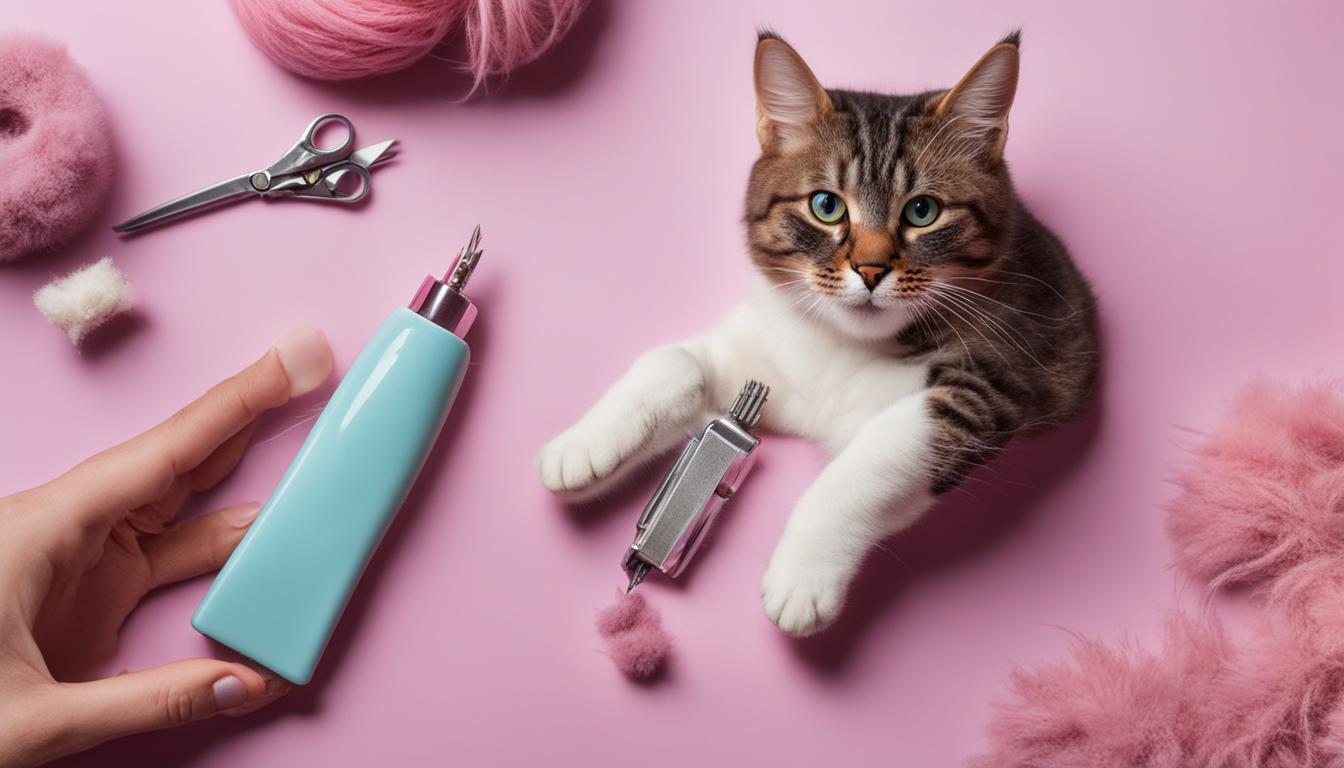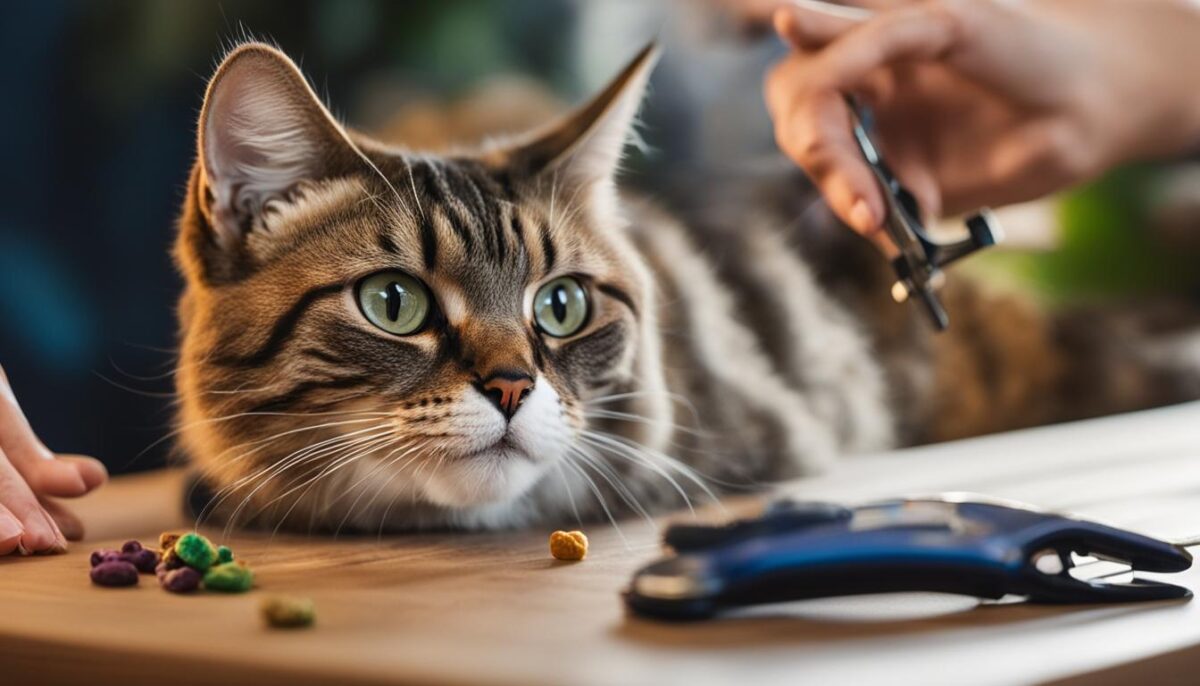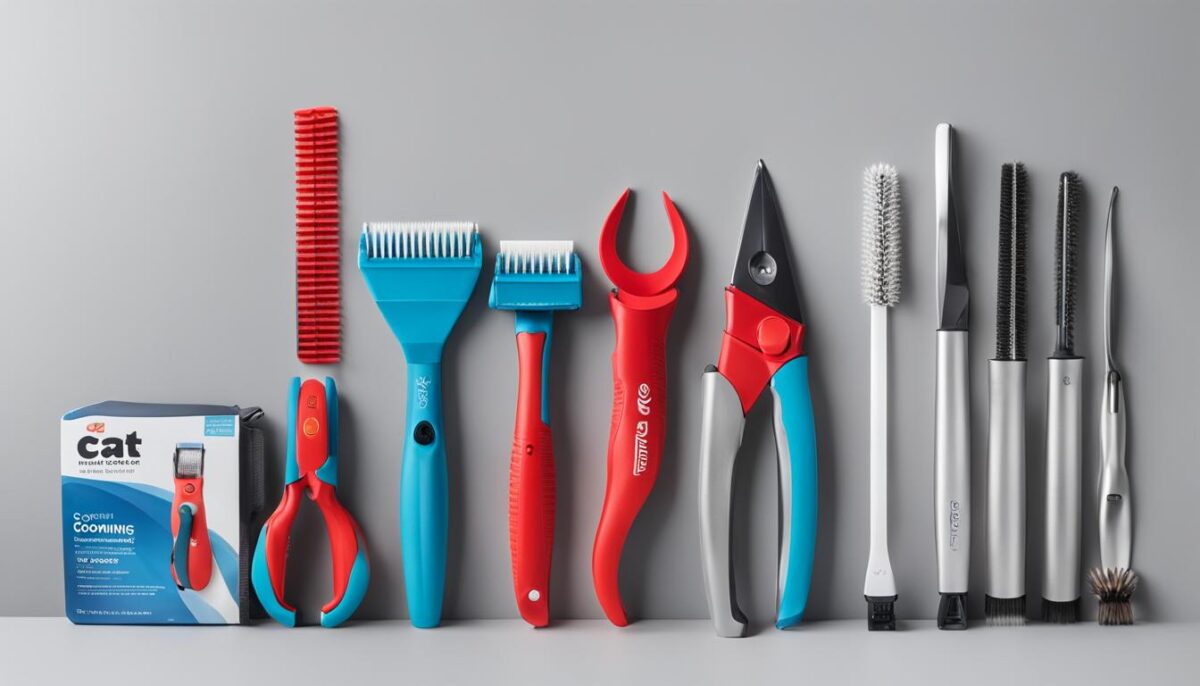As a loving pet owner, you want to take good care of your cat. One important task is trimming your cat’s nails. It’s good for your cat and saves your sofa too! You might think your cat does not need a nail trim. Or maybe you tried before and it was hard. But cats need their nails short to feel comfy, avoid getting stuck, and to protect themselves. Clipping nails does not have to be scary. With the right tools like cat nail trimmers and some handy tricks, like clicker training for cats, you can make nail clipping simple and fun. This guide will help you learn the skills to help your furry friend. Say no to declawing—it’s not kind to cats. Instead, let’s learn to clip those nails and keep your kitty happy!
Key Takeaways
- Learn to trim your cat’s nails at home.
- Keep your cat’s well-being at the forefront by skipping declawing.
- Use tools like cat nail trimmers to make clipping easier.
- Try clicker training for cats to turn nail clipping into a fun game.
- By clipping regularly, you keep your cat comfy and your home nice.
The Importance of Regular Cat Nail Trimming
Just like people cut their nails to stay clean and healthy, cats need their nails trimmed too! It’s a big part of pet grooming. Let’s see why it’s so important and the good things that happen when you help your cat keep its nails just the right length.
Why Long Nails Can Be Harmful
Did you know that if a cat’s nails get too long, it can hurt them? Long nails can get stuck in carpets and that can pull on their toes. It’s painful, like if you pulled on your finger really hard! This can make cats walk in a funny way, which is not good for their legs and can make their joints sore over time. Sometimes, the nails can even curl around and grow into the footpad – ouch! That’s why taking care of cat claw health is so important.
Benefits of Keeping Your Cat’s Nails Trimmed
Trimming cat nails has lots of benefits. Short nails mean your kitty won’t scratch you or your family by accident. It also keeps your furniture safe from scratches. But most of all, your cat will be comfy and happy because its paws won’t hurt, and it can walk, jump and play properly.
Regular Trimming as a Wellness Practice
When you trim your cat’s nails, you are doing something great for their health. It shows you care a lot about your furry friend. Regular nail trims keep your cat’s paws in tip-top shape and help you and your cat have a good time together without any ouches. It should definitely be a part of your pet grooming routine.
| Benefits of Trimming | What Happens If Not Trimmed |
|---|---|
| No snagging on carpets | Nails get stuck and can hurt |
| Comfy walking and no joint pain | Walking funny and joint issues |
| Happy times with no scratches | Scratches by accident on skin or furniture |
| Paws stay healthy | Nails can grow into footpads and cause pain |
So, keep those cat claws cute and short, and your cat will be the happiest pet on the block!
Preparing for the Nail Trimming Session
Before you start trimming your cat’s nails, you need a quiet spot. Make sure it’s away from busy places in your home where noises and distractions are less. Have a spot where both you and your kitty feel comfy. Think about setting up cat grooming preparation in a cozy corner or maybe your lap!
Gather your tools for a cat nail trim setup. This includes:
- Nail trimmers or a grinder
- Treats to reward your cat
- Styptic powder just in case
- A soft towel
- And of course, patience
Make sure your nail clippers are sharp. You want a clean cut so your cat feels okay. Hold the trimmers in your hand to see if they feel right.
Lay out all you need before you bring your cat over. This keeps things calm. You don’t want to have to get up and search for things once you start. Let’s keep the nail trim happy and easy-going.
| Item | Description | Why It’s Important |
|---|---|---|
| Nail Trimmers | Scissors-style or grinder | Sharp tools make for quick, clean cuts. |
| Treats | Your cat’s favorite snacks | For positive vibes and rewards. |
| Styptic Powder | Stops bleeding if needed | For peace of mind in case of a mistake. |
| Soft Towel | For wrapping your cat if needed | Helps in keeping your cat still. |
| Patience | Your ability to stay calm and kind | Cats feel what you feel. Stay chill, so they do too. |
Slowly show your cat the clippers. Let them sniff and see it’s not scary. If they stay calm, give them a treat! This way, they’ll know trim time can mean treat time, too.
Lastly, remember that being gentle and loving during the whole process is key. Trimming nails doesn’t have to be tough. With treats, snuggles, and kind words, your fluffy friend will learn this is just another way you care for them.
Training Cats to Accept Nail Trimming
Trimming your cat’s nails doesn’t have to be a battle. With a little bit of know-how, you can make nail trimming a positive experience for both you and your furry friend. Let’s learn some tricks, like clicker training for cat nail trims, that can help your cat stay calm and even look forward to nail trimming time.
Positive Reinforcement: The Role of Treats and Patience
Positive reinforcement is a powerful tool when it comes to teaching your cat new behaviors. Every time your cat sees the nail clippers, it should mean good things are coming. That’s where scrumptious treats and a little gadget called a clicker come in. Click and treat. That’s the way to rewarding cat behavior and building trust.
Gradually Introducing Nail Clippers and Paw Handling
Slow and steady wins the race when introducing your cat to nail clippers and paw handling. It’s best to start touching their paws gently when they are feeling relaxed. Attach the sound of the clicker to every small step, until your pal is okay with the clippers near their toes. Remember, little victories add up!
Understanding Your Cat’s Body Language
Speaking of victories, paying attention to your cat’s body language is key. Are their ears pinned back? Is their tail thumping? They might be telling you it’s not the best time for a nail trim. Respecting these signs is part of rewarding cat behavior, ensuring they feel listened to and safe at all times.
Remember to keep sessions short and sweet, and always end on a positive note. That way, your kitty will associate nail trimming time with fun and treats—and not something scary.
Choosing the Right Tools for the Task
Hey there! If you want to keep your cat looking sharp and feeling good, picking the perfect tools to trim their nails is super important. There are different cat nail trimmer types and cat grooming tools that can help make the job easy and safe. Let’s look at some of the top picks for keeping those kitty claws in check!
First up, we have scissors-style clippers. These are great because they let you do some precision snipping. Then there’s the guillotine-style, which is like a mini version of the big guillotines—don’t worry, it’s just for the nail tips! Pliers-style clippers are strong and can handle those tougher nails. And last, we have nail grinders—these can be really gentle for filing down the nail instead of cutting.
| Tool Type | Good For | Watch Out For |
|---|---|---|
| Scissors-style | Precision snipping | Needs steady hands |
| Guillotine-style | Quick trims | Blade changes |
| Pliers-style | Strong nails | Can be bulky |
| Nail Grinder | Gentle filing | Can be noisy |
Also, just in case an ‘oops’ happens while you’re trimming, it’s smart to have some styptic powder or cornstarch handy. These can help stop a nail from bleeding if you trim just a tad too close to the quick. Now that you know about the different tools, you can choose the best one for you and your kitty friend. Happy grooming!
Step-by-Step Guide to Trimming Your Cat’s Nails
Keeping your furry friend’s claws trimmed is an important part of their cat nail care routine. It can seem tricky at first, but with these cat nail clipping instructions, you’ll be a pro in no time! Follow these steps for safe pet nail trimming that will keep your cat feeling good and your furniture safe from scratches.
Isolating and Extending the Nail
To start trimming your cat’s nails, softly hold one paw and press the pad gently. This makes the nail come out so you can see it better. Make sure your cat is comfy during this process. If they pull away, give them a break and try again later.
Proper Techniques to Avoid Cutting the Quick
Look for the pinkish area within the nail – that’s the quick, and you don’t want to cut it. Snip just the pointy end of the nail at a 45-degree angle. If you accidentally clip the quick, don’t worry! Just use some styptic powder to stop the bleeding and give your cat some cuddles.
Creating a Routine: Frequency of Nail Trims
Young kittens might need their nails trimmed every week, while grown-up indoor cats usually need it every two weeks. After each trim, give your cat a tasty treat. This helps them think of nail trimming as a good and happy time.
Remember to go slow and give lots of love. Here’s a handy chart to help you keep track:
| Age of Cat | Trimming Frequency | Tips for Trimming |
|---|---|---|
| Kittens | Once a week | Start early to get them used to it! |
| Adult Cats | Every 1-2 weeks | Keep calm and reward with treats. |
| Senior Cats | Check often, trim as needed | Be extra gentle with their paws. |
Conclusion
You’ve learned great things about how to trim your cat’s nails. It takes time and care to do it right. Along the way, you found out that being patient, having the right tools, and knowing how your cat feels are key to a good nail trim. Keeping up with regular trims will make it easier for your cat over time.
Reviewing Key Takeaways
Let’s remember, cat grooming tips like getting your cat used to having its paws touched and using treats can make nail trims a breeze. Clipping your cat’s nails keeps them from getting too sharp and helps your cat be happy and comfy.
Maintaining Consistency for Long-Term Success
Sticking to a schedule for nail trims is important. With cat nail trimming consistency, your cat will know what to expect and won’t be afraid. Each time you trim their nails, it should get a bit easier to do.
When to Seek Professional Help
What if trimming nails is too hard or makes your cat very scared? Sometimes cats don’t like their nails cut, and that’s okay. It’s smart to ask for help from a vet or someone who knows a lot about cats. They can give you a hand and show you how to do it or do it for you. And always remember, don’t declaw your cat. It’s not good for them. Give them something to scratch on instead to keep their claws in shape.
FAQ
Why is it important to trim my cat’s nails regularly?
Regularly trimming your cat’s nails is essential for their well-being. It prevents nails from getting caught and causing injury, enhances their comfort when walking, avoids damage to furniture, and is a more humane alternative to declawing.
What problems can occur if my cat’s nails are overgrown?
Overgrown nails can cause discomfort, injury from getting snagged, changes in walking patterns that could lead to joint issues, and in severe cases, curl and grow into the foot pads, resulting in pain and possible infection.
How can I prepare for a stress-free cat nail trimming session?
Set up a quiet space with minimal distractions, ensure all tools like clippers or grinders, treats, styptic powder, and a towel are ready, and introduce your cat to the clippers gently to create a positive association.
What method can I use to train my cat to accept nail trims?
Use positive reinforcement with treats and clicker training to build a favorable emotional response toward the nail clippers. Start with less sensitive areas and gradually introduce the clippers and paw handling, always observing your cat’s body language for any signs of stress.
How do I select the right nail trimming tools for my cat?
Choose between scissors-style, guillotine-style, pliers-style clippers, or nail grinders based on what is most comfortable for you and least stressful for your cat. Also, have styptic powder on hand for any accidental cuts.
Can you explain the proper technique for trimming cat nails?
Gently press the paw pad to extend the nail, and trim at a 45-degree angle, avoiding the pink quick. Start by clipping just the tip and reward your cat afterward to associate the trimming with a positive experience.
How often should I trim my cat’s nails, and what if I’m new to this?
The frequency of trims can vary; kittens may need weekly trims, while adult cats often require trimming every couple of weeks. If you’re new, start by clipping a few nails at a time to allow your cat to gradually become comfortable with the process.
What should I do if nail trimming sessions are too stressful for my cat or me?
If the process is consistently stressful, seek professional help from a veterinarian or a professional groomer. They can provide guidance and even perform the trimming to ensure it’s done safely and without causing distress.
How can I make sure my cat remains comfortable with nail trimming over time?
Be consistent with your trimming routine, patient, and sensitive to your cat’s limits. Repeated, positive experiences over time will help your cat become more comfortable with the nail trimming process.
Is there an alternative to declawing if my cat scratches the furniture?
Yes, regular nail trimming and providing appropriate scratching posts for your cat are humane alternatives to declawing, which is painful and can be harmful to your cat’s health and behavior.


